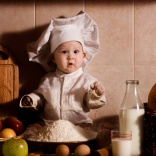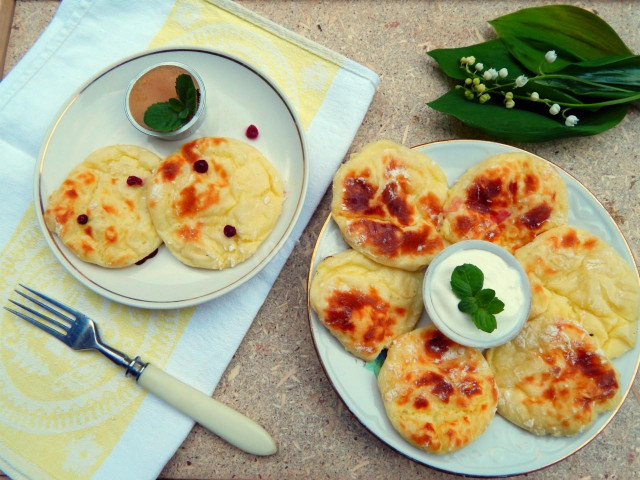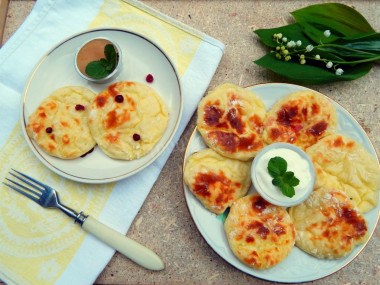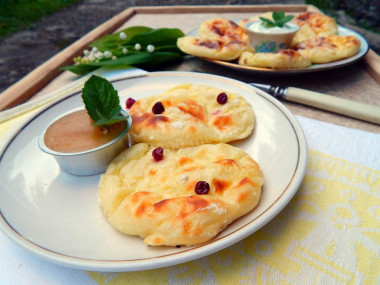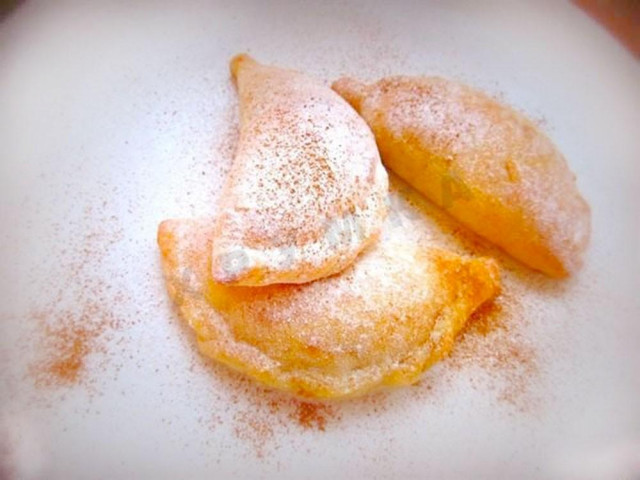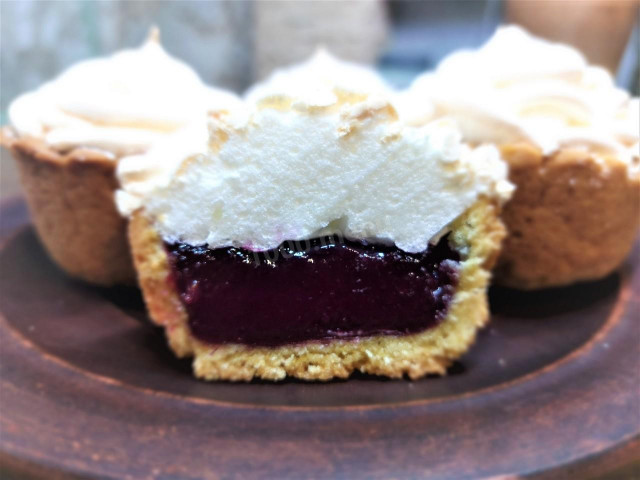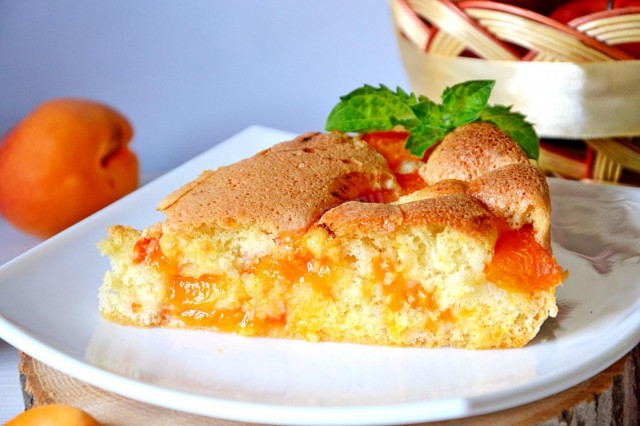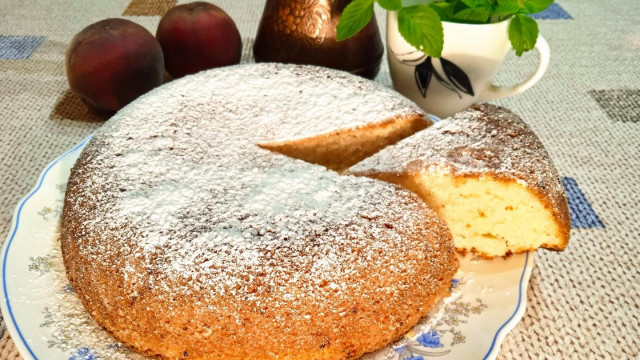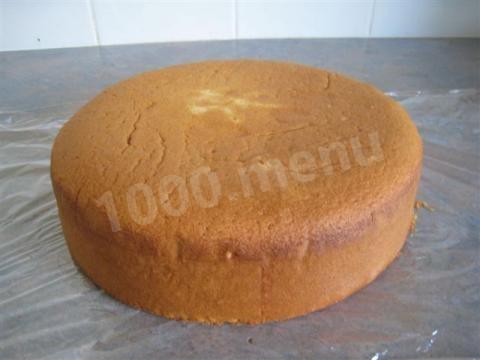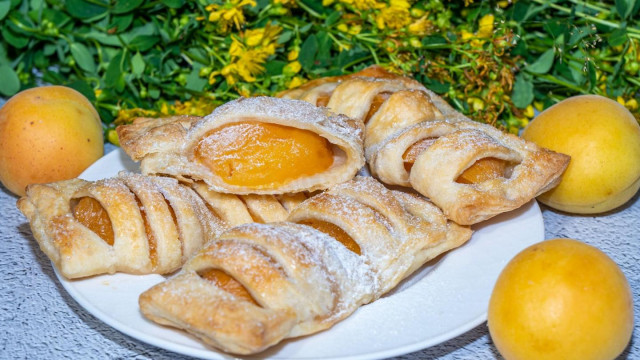Composition / ingredients
Step-by-step cooking
Step 1:
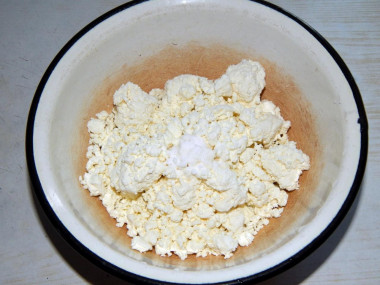
Preparing the ingredients. Those who want to get a very low-calorie version of cheesecakes can replace wheat flour with oatmeal by cooking it themselves from oat flakes. However, wheat flour makes cheesecakes lighter and airy in taste, so it's better to use it anyway. Since it needs to be added quite a bit, it will not add much calories. In a bowl, pour the low-fat cottage cheese (or a product with a low percentage of fat content).
Step 2:
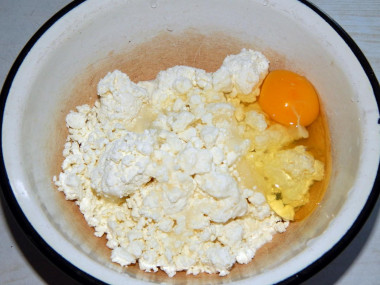
Add a pinch of salt and a pinch of vanilla to the cottage cheese. We do not add sugar, since we have dietary cheesecakes, and sugar is the main source of carbohydrates. Add a couple of tablespoons of milk, we also take it not of high fat content. We need milk so that the cottage cheese becomes pasty.We drive an egg into a bowl with cottage cheese. A chicken egg is necessary so that the cheesecakes do not fall apart. And it is also a source of protein.
Step 3:
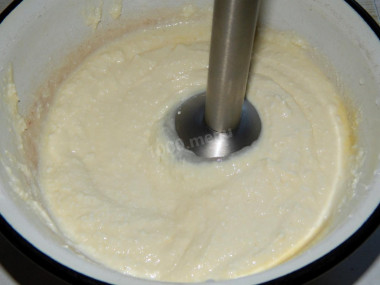
Whisk the mass with a blender.
Step 4:
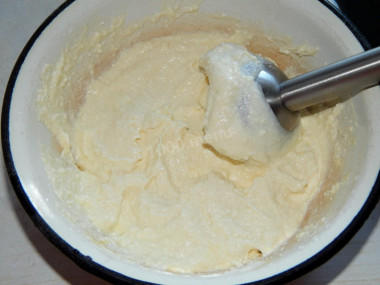
Add a tablespoon of wheat flour and baking powder. Gently and quickly mix the mass. You should get a thick, but sticky dough that you can take with your hands. Pour a little flour into a plate. With a tablespoon we put the curd dough in a plate with flour and form round and plump cheesecakes.
Step 5:
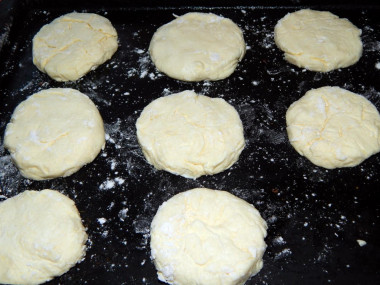
We put them on a dry baking sheet. We bake cheesecakes in the oven, and do not fry them in oil in a frying pan, which will make them even more dietary. The oven is heated to 180 degrees. Bake the cheesecakes until they are ruddy, about 25 minutes, but focus on the work of your oven. It takes so much time for the cheesecakes to bake well, but at the same time they do not burn.
Step 6:
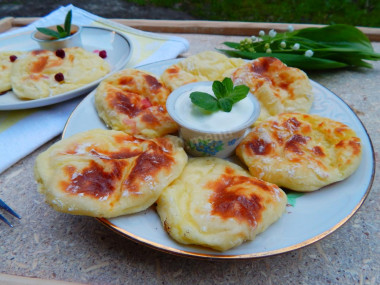
Take the cheesecakes out of the oven. Carefully remove them from the baking sheet, because they turn out to be airy and soft. With sharp manipulations, they can deflate. We put them in a plate and let them cool down a little, then they will harden, but they will remain the same airy. You can lightly dust them with powdered sugar. Serve with honey or cream. Enjoy your meal!
Many people who watch their figure and are constantly on diets limit themselves in everything, even in healthy and delicious food.
Be prepared for the fact that flour may need more or less than indicated in the recipe. Focus not on the amount of flour, but on the desired consistency of the dough. To avoid mistakes, read about flour and its properties!
Calorie content of products possible in the composition of the dish
- Whole cow's milk - 68 kcal/100g
- Milk 3.5% fat content - 64 kcal/100g
- Milk 3.2% fat content - 60 kcal/100g
- Milk 1.5% fat content - 47 kcal/100g
- Concentrated milk 7.5% fat content - 140 kcal/100g
- Milk 2.5% fat content - 54 kcal/100g
- Cottage cheese of 40% fat content - 466 kcal/100g
- Cottage cheese of 20% fat content - 233 kcal/100g
- Cottage cheese of 18% fat content - 226 kcal/100g
- Cottage cheese of 10% fat content - 156 kcal/100g
- Low-fat cottage cheese - 75 kcal/100g
- Cottage cheese with sour cream - 260 kcal/100g
- Fruit cottage cheese - 147 kcal/100g
- Soft dietary cottage cheese - 170 kcal/100g
- Cottage cheese "vitalinia" - 64 kcal/100g
- Cottage cheese "morning" ( "danone") without sugar - 91 kcal/100g
- Cottage cheese - 156 kcal/100g
- Salt - 0 kcal/100g
- Wheat flour - 325 kcal/100g
- Vanillin - 288 kcal/100g
- Baking powder - 79 kcal/100g
- Chicken egg - 80 kcal/100g
